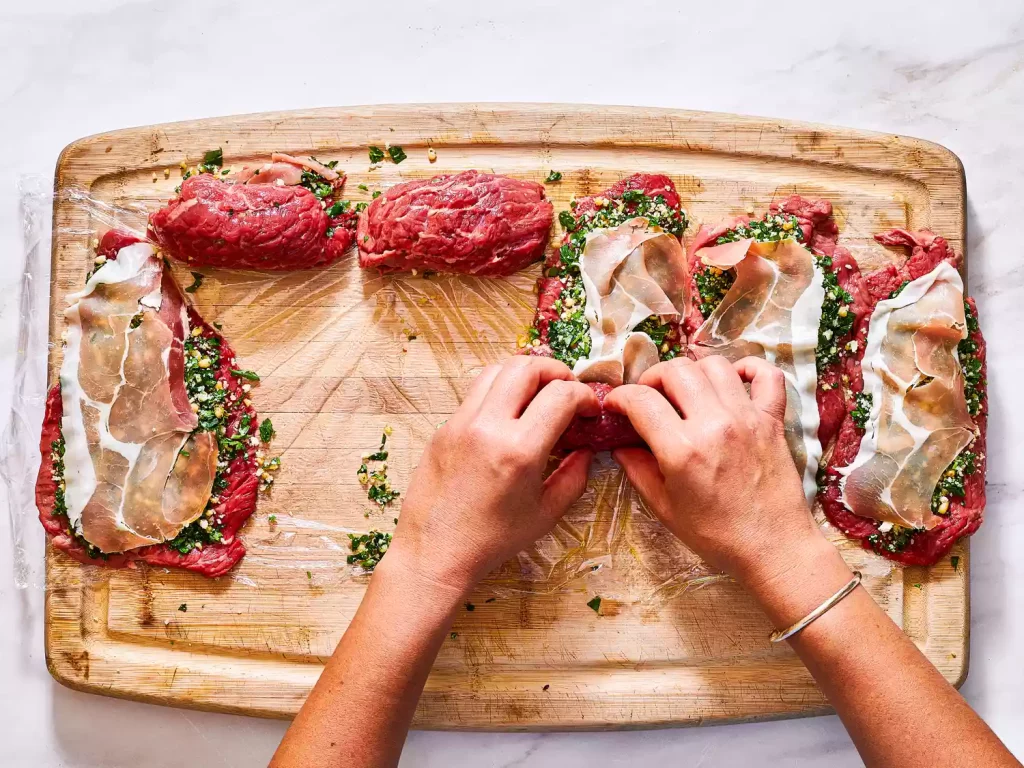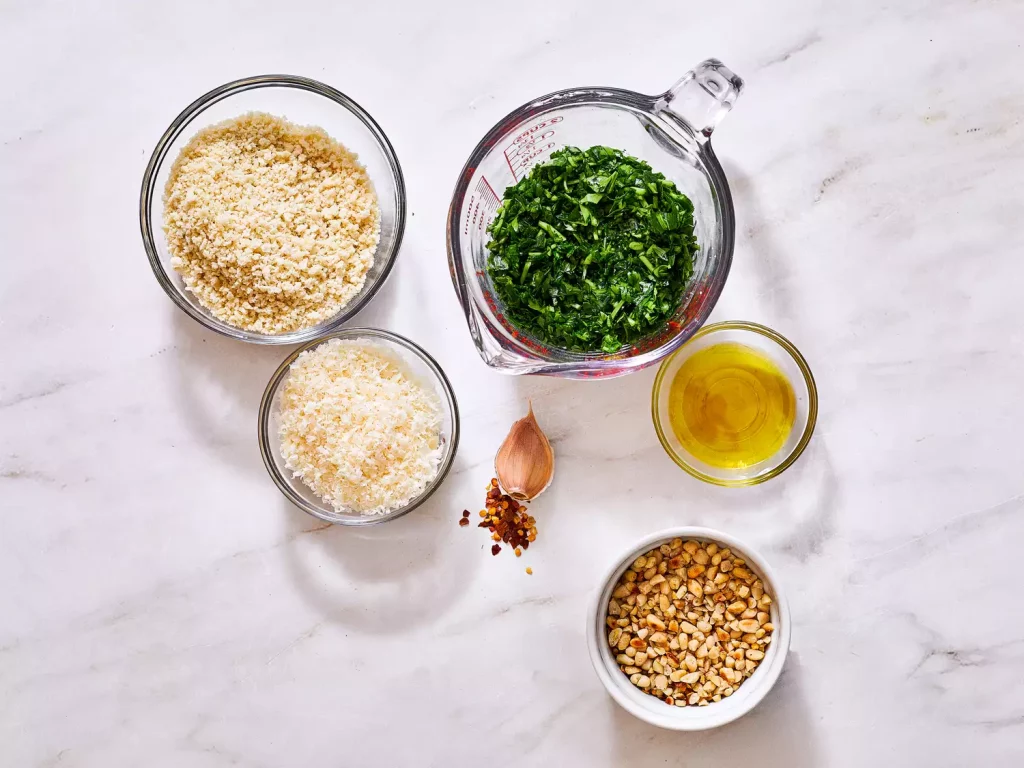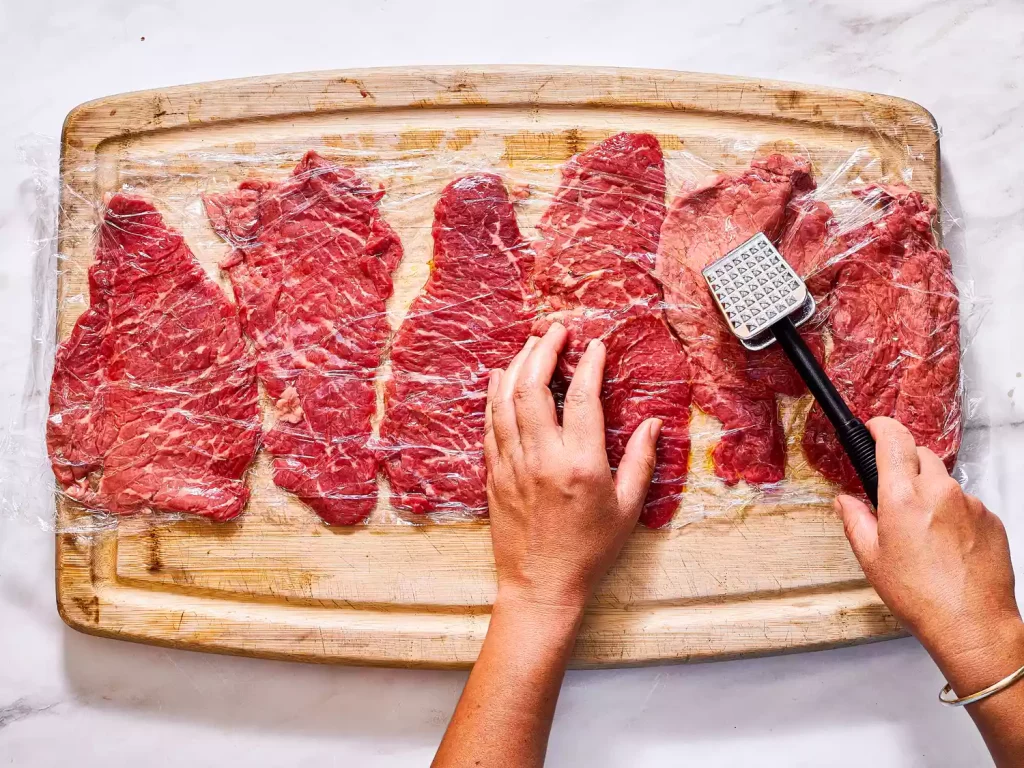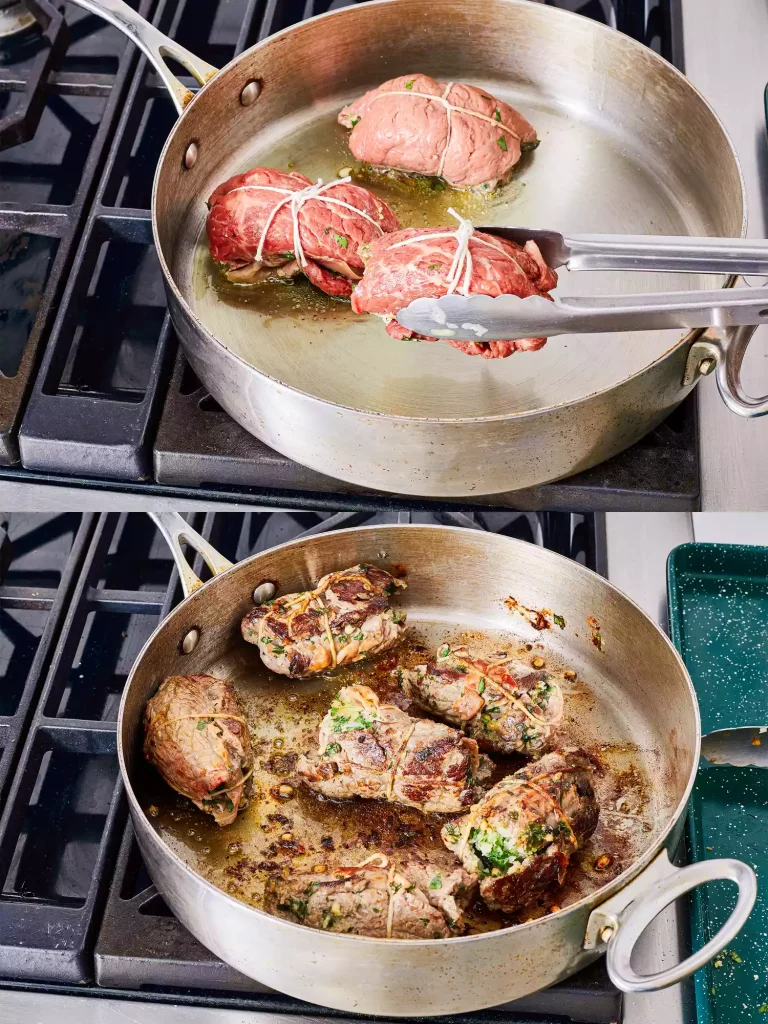Beef Braciole is a traditional Italian dish known for its rich flavors and comforting qualities. This stuffed beef roll, braised in a savory tomato sauce, epitomizes Italian home cooking at its finest. Whether served as a main course for a family dinner or a special occasion, Beef Braciole offers a taste of Italy’s culinary heritage. In this comprehensive guide, we’ll explore the origins of Braciole, provide a detailed recipe, offer variations, and share tips to ensure your Braciole turns out perfectly every time.
Cultural Background and Origins
1. Historical Roots
Beef Braciole, or Braciola in Italian, is a dish with roots deeply embedded in Southern Italian cuisine. Traditionally, it involves thin slices of beef rolled around a flavorful stuffing, then braised in a rich tomato sauce. The dish is particularly popular in regions like Sicily and Campania, where it is often prepared for festive occasions and Sunday family meals.
2. Evolution of the Dish
The concept of stuffing and rolling meat dates back to ancient times, but Braciole as we know it today has evolved over centuries. In Italy, variations of Braciole can be found, including those made with pork, veal, or even eggplant. Each region has its twist, influenced by local ingredients and culinary traditions.
Ingredients for Beef Braciole
1. Essential Ingredients
- Beef: Choose high-quality beef for the filling, such as flank steak, sirloin, or top round. These cuts are ideal because they are flavorful yet tender when cooked properly.
- Breadcrumbs: Serve as a base for the stuffing, providing texture and absorbing flavors from the other ingredients.
- Parmesan Cheese: Adds a salty, nutty flavor that complements the beef and other stuffing ingredients.
- Garlic and Parsley: Infuse the stuffing with a fresh, aromatic quality.
- Pine Nuts or Raisins: Optional additions that add a touch of sweetness and richness to the stuffing.
- Tomato Sauce: The cooking sauce, typically made from tomatoes, garlic, onions, and herbs, creates a flavorful base that the Braciole simmers in.
2. Optional Ingredients
- Prosciutto or Pancetta: Adding these cured meats to the stuffing provides an extra layer of depth and richness.
- Red Wine: Used in the braising liquid to add complexity and depth of flavor to the sauce.
Preparation Steps

1. Preparing the Beef
- Tenderizing the Meat: Start by placing the beef slices between two sheets of plastic wrap. Use a meat mallet or rolling pin to pound the slices until they are about ¼ inch thick. This step ensures the meat is tender and easier to roll.
- Seasoning the Beef: Season the beef slices with salt and pepper on both sides. This initial seasoning enhances the flavor of the meat.

2. Making the Stuffing
- Preparing the Filling: In a bowl, combine breadcrumbs, grated Parmesan cheese, minced garlic, chopped parsley, and any optional ingredients such as pine nuts or raisins. Mix until well combined.
- Seasoning the Filling: Season the stuffing mixture with salt and pepper to taste. The filling should be well-seasoned to impart flavor into the meat.
3. Assembling the Braciole
- Stuffing the Beef: Place a portion of the stuffing mixture onto each beef slice, spreading it evenly. Leave a small border around the edges to prevent the filling from spilling out during cooking.
- Rolling the Beef: Roll up each beef slice tightly around the filling, securing the ends with toothpicks or kitchen twine. This helps maintain the shape of the Braciole during cooking.

4. Browning the Braciole
- Heating the Pan: Heat a large skillet or Dutch oven over medium-high heat with a small amount of oil.
- Browning the Rolls: Add the stuffed beef rolls to the hot pan and sear on all sides until browned. This step develops a rich, caramelized flavor that enhances the overall dish.
5. Making the Sauce
- Preparing the Base: In the same pan used for browning the Braciole, add chopped onions and minced garlic. Sauté until the onions are translucent and fragrant.
- Adding Tomatoes: Stir in canned crushed tomatoes or tomato sauce, along with any additional herbs such as basil or oregano.
- Simmering the Sauce: Bring the sauce to a simmer and cook for a few minutes to meld the flavors. Adjust seasoning with salt and pepper.

6. Braising the Braciole
- Adding the Braciole: Place the browned beef rolls back into the pan with the sauce. Ensure they are partially submerged in the sauce for even cooking.
- Simmering: Cover the pan and reduce the heat to low. Simmer for 1.5 to 2 hours, or until the beef is tender and easily shreds with a fork. The slow cooking process allows the flavors to develop and the meat to become tender.
7. Final Touches
- Removing the Toothpicks: Once the Braciole is cooked, carefully remove the toothpicks or twine from the rolls.
- Adjusting the Sauce: Taste the sauce and adjust seasoning as needed. If the sauce is too thick, add a splash of beef broth or water to reach the desired consistency.
Serving Suggestions
1. Classic Accompaniments
- Pasta: Serve Beef Braciole over a bed of pasta, such as spaghetti or fettuccine. The pasta absorbs the flavorful sauce and complements the rich meat.
- Polenta: Creamy polenta is an excellent alternative to pasta, providing a smooth and comforting base for the Braciole.
- Garlic Bread: A slice of crusty garlic bread is perfect for soaking up the delicious tomato sauce.
2. Garnishing
- Fresh Herbs: Garnish with chopped fresh parsley or basil to add a pop of color and freshness.
- Grated Cheese: Sprinkle additional Parmesan cheese over the top before serving for extra flavor.
Cultural and Regional Variations
1. Regional Differences
- Sicilian Style: In Sicily, Braciole is often made with pork or veal and includes ingredients like pine nuts, raisins, and hard-boiled eggs in the stuffing.
- Neapolitan Style: In Naples, the Braciole may be braised in a tomato sauce with the addition of red wine, which adds complexity to the sauce.
2. Alternative Ingredients
- Meat Variations: Experiment with different cuts of meat or even chicken for a lighter version of Braciole.
- Spice Variations: Adjust the spice profile by adding crushed red pepper for heat or experimenting with different herbs and spices.
Tips for Perfect Braciole
1. Choosing the Right Cut of Meat
- Tender Cuts: Flank steak, top round, and sirloin are ideal cuts for Braciole due to their flavor and tenderness when cooked slowly.
2. Ensuring Even Cooking
- Browning: Ensure the beef is browned on all sides to develop a rich flavor and create a caramelized crust.
- Braising: Cook the Braciole over low heat to ensure even, slow cooking that results in tender meat.
3. Enhancing Flavor
- Resting the Meat: Let the Braciole rest for a few minutes after cooking to allow the juices to redistribute and enhance the flavor.
- Flavor Adjustments: Taste the sauce periodically during cooking and adjust seasoning as needed. Adding a splash of balsamic vinegar can add a touch of acidity and depth.
Conclusion
Beef Braciole is a dish that embodies the essence of Italian comfort food. With its rich flavors, tender beef, and savory tomato sauce, it offers a delightful culinary experience. By understanding the cultural significance, mastering the preparation steps, and exploring various serving and flavor options, you can create a memorable dish that celebrates Italian cooking traditions.
This comprehensive guide provides all the tools and insights needed to make perfect Beef Braciole. Whether you’re preparing it for a family meal or a special occasion, this dish will surely impress and satisfy. Enjoy the process of making this classic Italian dish and savor the results with loved ones.

